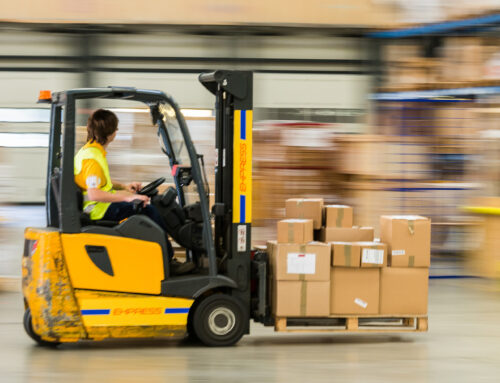Can building pallets and crates out of softwood ever compare to the strength you’ll get with a hardwood?
We all know that there’s a difference between hardwood and softwood, but we’ve discovered that a lot of people don’t really understand the difference between the two. While hardwood is often touted as being the stronger, more superior wood, that doesn’t always mean it’s the right choice for your particular application.
Depending on the specifications of what you want to put on a pallet or crate, where it’s going, and how it will be stored, hardwood may be a poor or unnecessarily expensive choice.
It may also surprise you to find out that softwood really isn’t all that soft, and all hardwoods aren’t hard.
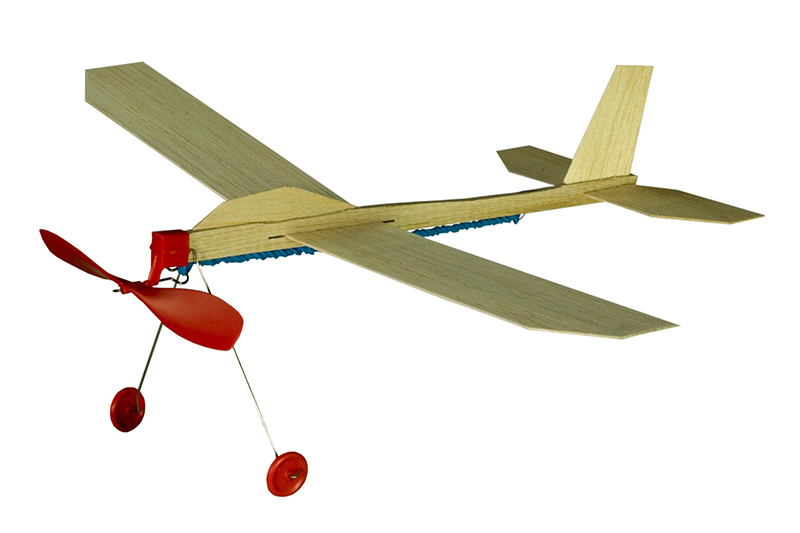 For example, I’m sure you’ve heard of balsa wood – it’s the same wood that those little glider airplanes are made out of that we all played with as kids. It’s one of the lightest woods in the world, you can score it with a fingernail, and you can easily break it with your own hands (or a bad throw of your glider).
For example, I’m sure you’ve heard of balsa wood – it’s the same wood that those little glider airplanes are made out of that we all played with as kids. It’s one of the lightest woods in the world, you can score it with a fingernail, and you can easily break it with your own hands (or a bad throw of your glider).
Would it surprise you to know that balsa wood is actually a hardwood?
What is Hardwood?
So, let’s talk about hardwood first. All hardwood comes from deciduous trees. Generally, these are the ones with leaves instead of needles, but that isn’t always the case. The distinguishing traits of hardwoods is that the trees shed their leaves in the winter, flower, and they produce seeds with some form of covering, like a walnut or an acorn (oak).
In the United States, hardwoods have traditionally dominated the wood packaging industry for a number of reasons.

For a start, a lot of hardwoods are harvested in the US for use in furniture, cabinetry, and flooring. Only the best cuts of lumber can be used for these purposes, so that used to leave a lot of lower grade lumber that could be sold to the wood packaging industry to make pallets and crates. This served to lower mill expenses and minimize wood waste, plus it made hardwoods abundant.
Today, however, many hardwood mills use new technologies to get as much high grade lumber out of each log as possible. In the modern sawmill, geometric scanners determine the best way to cut logs with the least waste, and even grade the lumber. The rise of technology in sawmills has significantly lowered the amount of lower grade lumber available to the wood packaging industry. Additionally, increased exports of hardwoods have helped to diminish the supply.
Secondly, hardwood prices have remained fairly consistent until recently. Sure, hardwoods have always been a more costly option than softwoods, but prices didn’t fluctuate all that much. In the last few years however, prices have been consistently pushed higher – about a 30% increase overall. When the trade war with China began in 2018, that also impacted the market for hardwood. As of the writing of this article, China imposes a 10% tariff on U.S. hardwoods and hardwood exports have dropped 45% in volume, according to Timber Processing. The jury is still out on how this will affect the hardwood market long-term .
Lastly, the strength and durability that hardwoods provide for pallets and crates has always been a big enticement to use it, even when it may be unnecessary. While there are always times when hardwood is the right wood packaging choice, the need for the added strength and durability found in hardwood can often be offset with better package design using softwood or SYP.
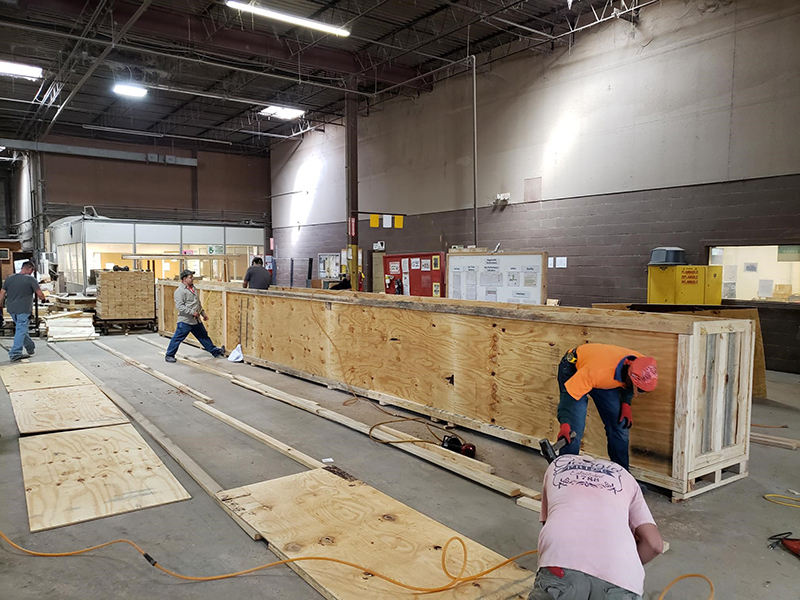
There are times when something as simple as changing up the fasteners or adding an extra deckboard can make a softwood pallet or crate as strong as one made from hardwood – and at a much lower price. The crate at the right is a good example of this. It’s 42 feet long and designed to house industrial sized roll up doors. It’s large, it’s heavy, and it’s made entirely out of softwood.
Today, hardwoods only occupy about 20% of the wood packaging market, due to their price and availability. Red oak is the most popular hardwood used in wood packaging, but other options include birch, cherry, maple, ask beach, yellow birch, and elm. All of these are considered high-density hardwood, making them much heavier than their softwood counterparts. Other low-density hardwoods, such as walnut, poplar, willow, linden, and aspen, can also be used in hardwood pallet and crate applications requiring extra strength and durability.
What is Softwood?
All softwoods are evergreen trees. Generally, these are the ones with needles instead of leaves, but there are exceptions like live oak and southern magnolia. They also keep their needles (or leaves) throughout the year and don’t shed them in the fall, as hardwoods do.
Softwood trees are gymnosperms, which means that they drop their seeds on the ground with no covering. You might be thinking that pinecones serve as a covering for the seeds, but that’s not actually the case. Pinecones are loaded with seeds, kind of like a fruit, and when the pinecone is “ripe” or mature, the seeds are released on the ground.
The most common softwood used in wood packaging is southern yellow pine (SYP), which is mostly grown south of the Mason-Dixon line and east of the Great Plains. SYP is considered a “hard” pine, making it ideal for pallets and crates, and consists of four major species (longleaf pine, slash pine, loblolly pine, and shortleaf pine) that compose 90% of SYP inventory. The other 10% of SYP consists of 6 minor species.

SYP has become the wood of choice for most pallet and crate applications, occupying about 80% of the timber market, because it’s less expensive, fairly abundant, weighs less, and does a good job protecting most loads. Southern yellow pine is used in many more applications than hardwoods outside of the wood packaging industry, such as windows, doors, paper, furniture, and housing. That means there is more industrial grade SYP on the market for the wood packaging industry, keeping supply up and prices lower.
Let’s Talk Density
When it’s time to make a decision whether you want to use hardwood or SYP for your pallets or crates, one of the most important factors to consider is whether your application requires a higher density wood or a lower density wood.
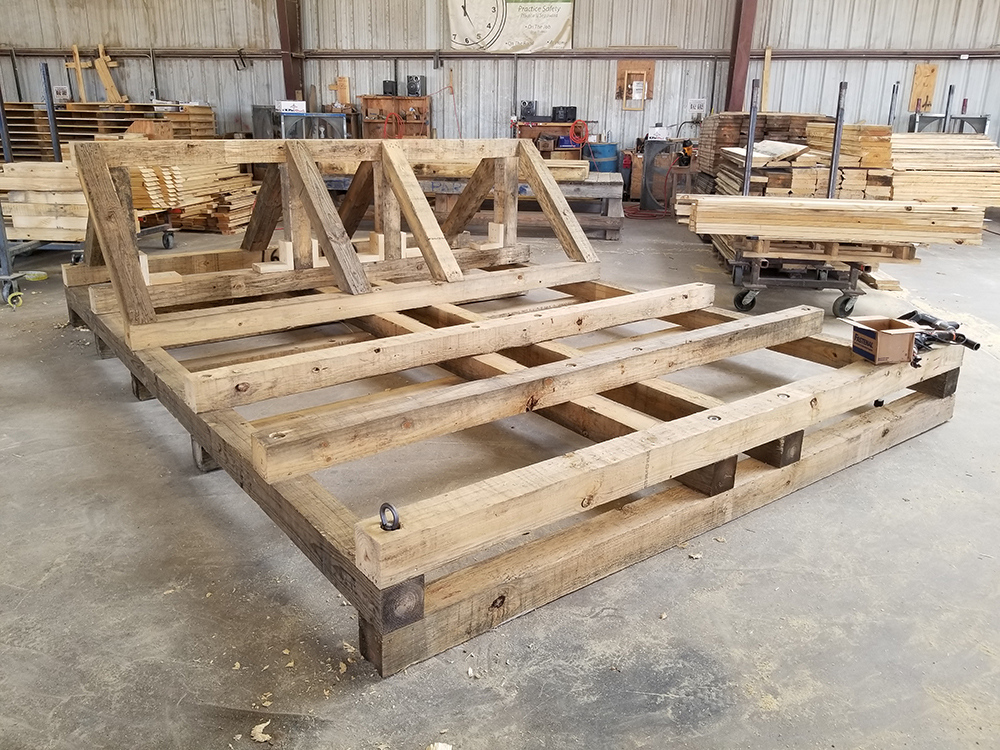 Manufacturers in industries producing extremely heavy products may need to choose higher density wood because it will stand up better to the weight of the load. Here at Conner, we often see this in the HVAC industry, where huge appliance units need to be transported. Depending on the size and weight, other types of manufacturing may lean towards the higher density hardwoods for their pallets and crates as well. Very large/heavy turbines, heavy industrial equipment, and steel often fall into that category. We recently built custom hardwood pallets for a manufacturer shipping train cabs (picture on right) because they were large and very heavy – it’s a train after all.
Manufacturers in industries producing extremely heavy products may need to choose higher density wood because it will stand up better to the weight of the load. Here at Conner, we often see this in the HVAC industry, where huge appliance units need to be transported. Depending on the size and weight, other types of manufacturing may lean towards the higher density hardwoods for their pallets and crates as well. Very large/heavy turbines, heavy industrial equipment, and steel often fall into that category. We recently built custom hardwood pallets for a manufacturer shipping train cabs (picture on right) because they were large and very heavy – it’s a train after all.
SYP, on the other hand, is the wood choice for the majority of pallets and crates built in the united states. As we mentioned earlier, SYP is a lower density wood than most hardwoods, but that doesn’t mean it’s inferior to hardwood.
For the majority of products manufactured, the use of hardwood would simply be overkill. It’s just not necessary to manage the weight of the load.
Wood density also affects other aspects of your wood packaging. For example, the choice of fasteners used in an application can vary greatly depending on density. In addition, the weight of hardwoods can affect your load. Because it’s so dense, it weighs more.
Is Softwood Ever As Strong As Hardwood for Wood Packaging?
So now that we’ve talked about both kinds of wood, let’s get down to the big question: Is softwood ever as strong as hardwood for pallets and crates?
The answer: It depends.
Hardwood, by its very nature, is strong and dense, and it’s ideal for the really heavy stuff. If it goes toe-to-toe with softwood, it is stronger, but there’s more to the story.
Pallets and crates made from SYP can often be designed to rival hardwood applications. The addition of a couple of fasteners, an extra deck board, or some strapping in the design can often be all it takes to give an SYP pallet or crate the added strength needed and bypass the need for hardwood.
Going the SYP route also generally means lower costs. Even with extra components added to an SYP pallet, it will still likely cost less than its hardwood equivalent.
Which Type of Wood Should You Use?
Ultimately, your pallet or crate designer should be able to answer this question for you. A designer can look at your product specs, along with where and how you’re shipping your product, and tell you the best material to use. Trust your designer to know what’s best.
If you don’t trust your designer, get a new one.
Beyond the design factor, there’s also cost. Can you afford hardwood? Does it make sense to incur the expense?
The last think that should be considered in the decision is location. If you’re palletizing loads in Southern Florida, where hardwoods aren’t harvested, then they’ll have to be brought in by truck or rail. For many applications, that makes hardwood cost prohibitive.
Wrapping It Up
In the end, choosing between hardwood and softwood for your pallets or crates comes down to:
- The product you’re palletizing
- Your budget
- The wood packaging design
- Wood availability
- Your location
Careful consideration must be applied, because it’s not always a black and white decision.
![]() It’s unfortunate that softwoods have been labeled as “softwood” because it implies that the wood is inferior to hardwood and often creates a reluctance to use it. If they were both simply called “evergreen” and “deciduous”, there would be a lot less debate about which one is better.
It’s unfortunate that softwoods have been labeled as “softwood” because it implies that the wood is inferior to hardwood and often creates a reluctance to use it. If they were both simply called “evergreen” and “deciduous”, there would be a lot less debate about which one is better.
SYP offers plenty of strength and durability for most applications. After all, it’s the type of wood used to frame houses, and they seem to hold up pretty well.
Discover How to Reduce Your Supplier Risk Now
Uncover all the factors that put your supply (and suppliers) at risk, how you can minimize supplier impact, and what strategies you can use if things go wrong.

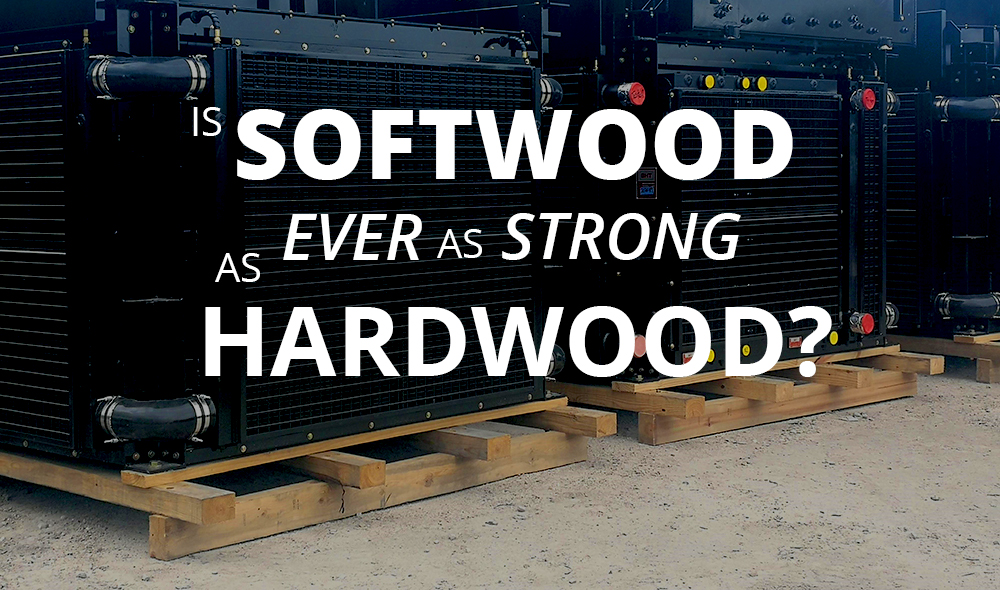
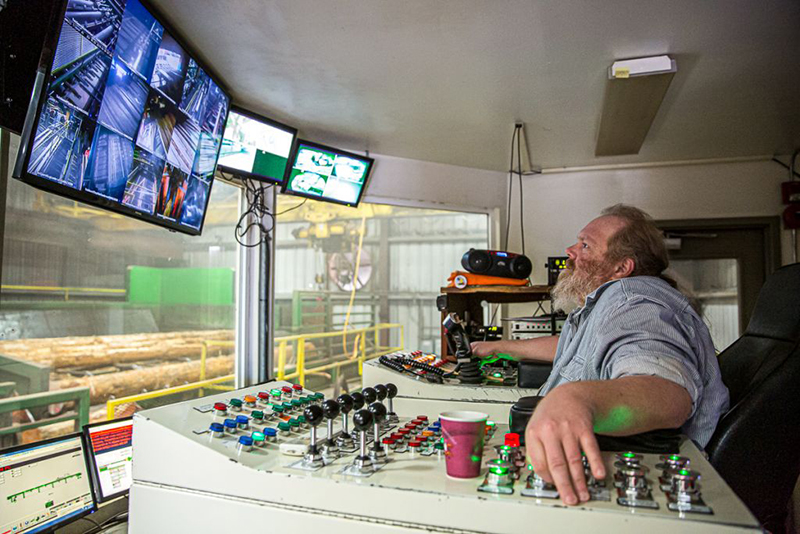
![[PRESS RELEASE] Conner Industries Announces Website Dedicated to Integrated Packaging Division](https://conner.b-cdn.net/wp-content/uploads/2024/05/Conner-Packaging-Blog-500x383.jpg)



